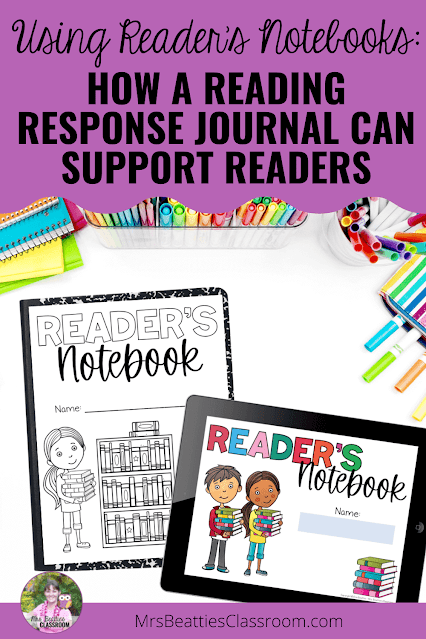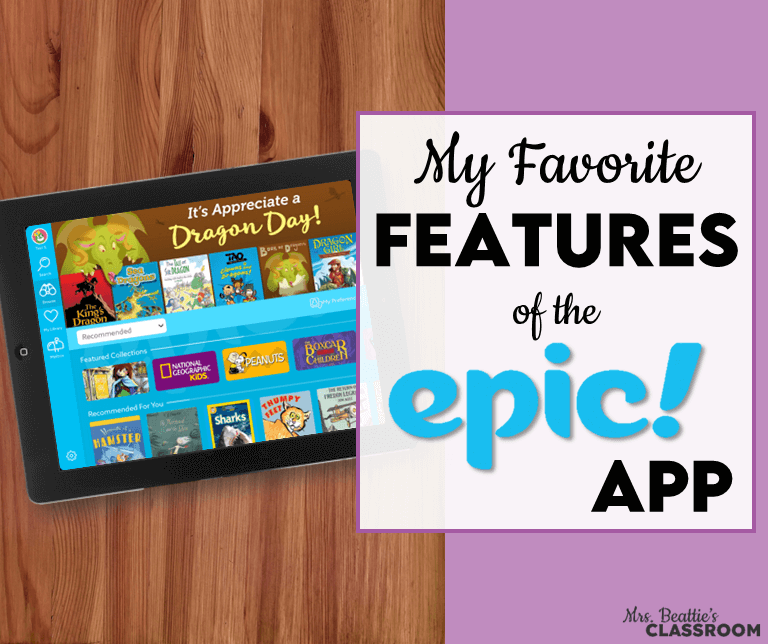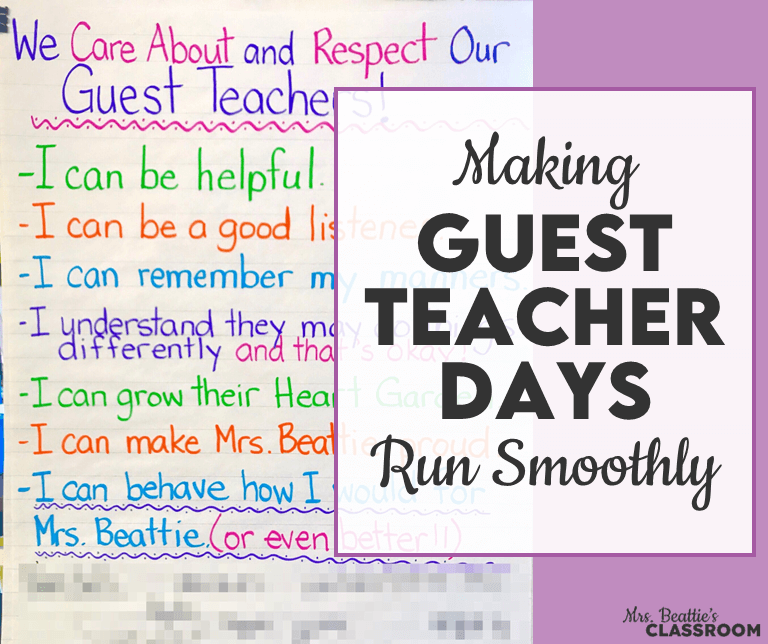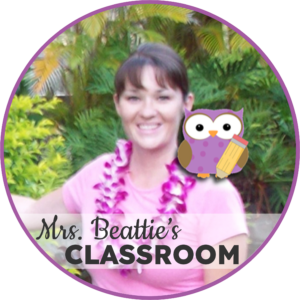Wondering how to get started with reader’s notebooks? This post is for you! Using a reader’s notebook with a reading response journal is a fantastic way to support your young readers as they develop essential reading comprehension skills.
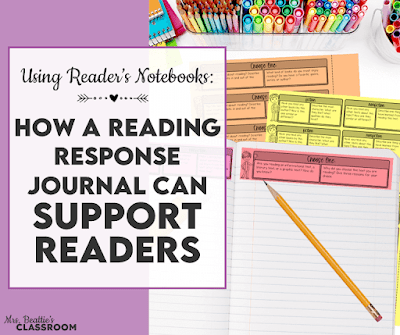
What is a Reader’s Notebook?
In my classroom, the reader’s notebook is where my students engage daily with books. A reader’s notebook can be used along with any text or genre to support students in developing their reading comprehension skills in the classroom.
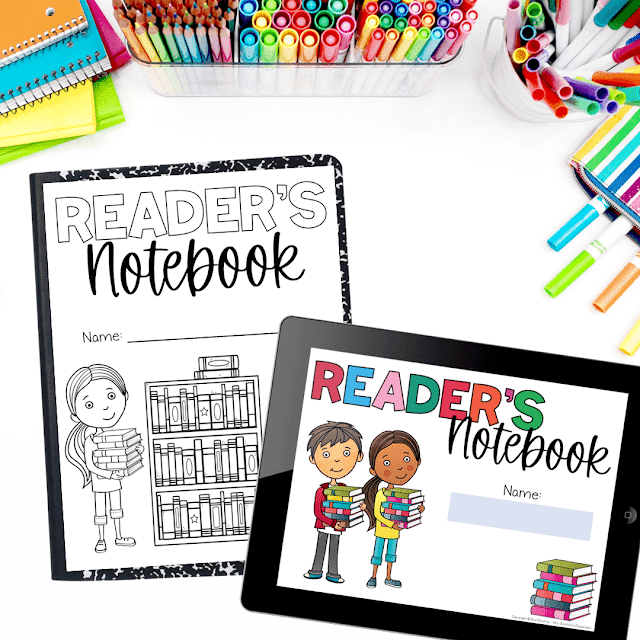
Parts of a Reader’s Notebook
Our reader’s notebooks have three distinct sections with very specific purposes:
Tracking Daily Reading
First is a section for tracking daily reading. This tracking area allows students to note the books they’d like to read, their genres, and their completed books. This is not a reading log like the one you might have been assigned as a student, and students are not documenting the time they spend reading in the classroom or at home.
It is a great place to encourage students to try new things and stop choosing the same types/genres/series of books again and again.
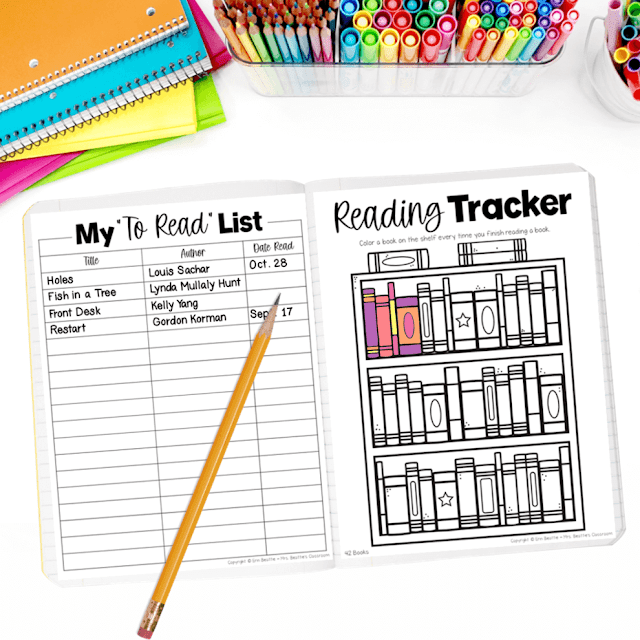
Setting and Monitoring Goals
The second part of the reader’s notebook is geared toward setting and monitoring reading goals. To begin, students can choose to set a target number of books they’d like to read during the school year. I have created four bookshelf graphics with different numbers of books that my students can choose from based on their target numbers. By coloring the books as they complete a text, students can visualize how their goal is progressing.
We also use this section of the reader’s notebook to set specific goals related to reading comprehension skills. I have used Jennifer Serravallo’s Reading Conferences resource for several years. Using this resource, I meet individually with each of my students early in the year to establish a baseline measure of what they know and can do in reading. An Assessment Conference Form included in this resource helps me establish this baseline and select personally relevant student goals. We document these goals and monitor progress in the reader’s notebook.
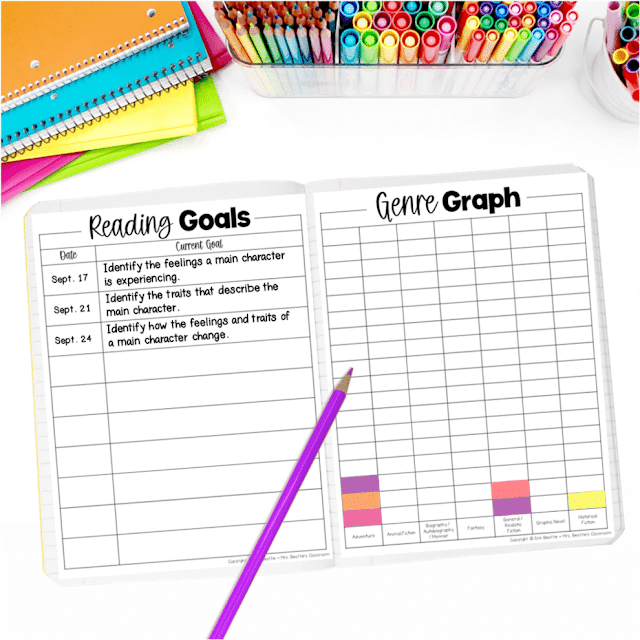
Responding to Reading Daily Prompts
The last section in our reader’s notebooks is the reading response journal, dedicated to daily reading responses and reflections. Since all my students read different self-selected books, I’ve designed reading response journal activities to work with any text and genre. Since I also believe strongly in the power of choice in the classroom, I give my students two prompts to choose from each day. The prompts appear several times throughout the school year, allowing my students to revisit any they may skip the first time.
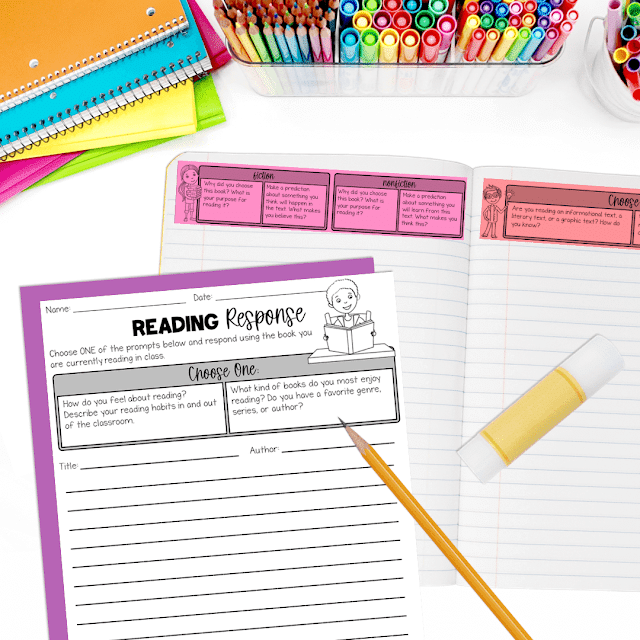
How the Reading Response Journal Works
I teach most of my reading skills explicitly in small groups based on my initial assessment reading conference. Using the Reading Conferences book, I pull small groups of students working on the same strategy together for lessons and check-ins. They will all come to the group with a different book, but the groups seamlessly run because they focus on the skills and strategies.
My mini-lessons are often pulled from the Reading Strategies Book by Jennifer Serravallo.
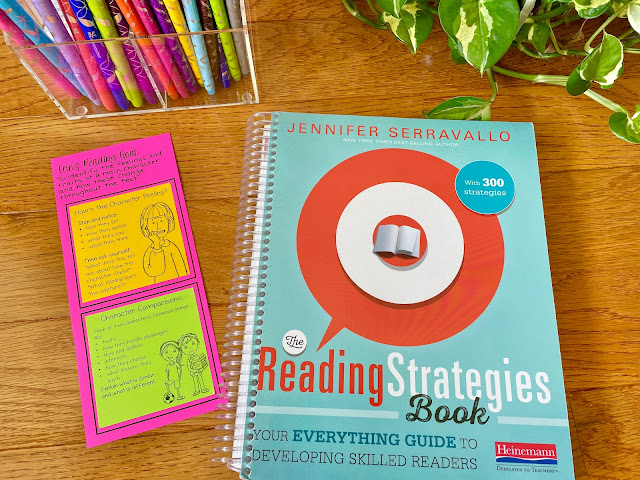
The students who meet with me often have a specific goal-focused prompt to complete after leaving me to do their independent reading. I’ll give them a specific goal from the Reading Strategies book on a sticky note, which they place on a bookmark to keep with their current book. The students will respond to the prompt in the reading response journal section of their reader’s notebook. We use our performance wall as a reminder of what a great response looks like.
Students who don’t meet with me on a particular day will work independently and complete one of the general prompts I have created for them. As I mentioned, these are recycled several times throughout the year, so students repeatedly work on curriculum-related tasks. This spiraling keeps the content fresh and helps students consolidate their skills effectively.
Reflecting on Reading Goals
The reader’s notebook is where students and I regularly review their reading goals, monitor progress, and establish new goals as skills grow. Because we use this resource daily, it is a fabulous place to see student growth over a term or school year.
A Closer Look at the Resource
My full-year Reader’s Notebook and Reading Prompts resource contains all the goal-setting and tracking pages you see here and more, plus 180 reading response journal pages.
Every reading response journal page contains prompts for use with any book OR specifically for fiction or nonfiction texts, and every page provides students with two prompt choices from which to choose. I’ve included a full-page size for binders or duotangs and 7×9 notebook strips to save paper.
I have also included a detailed getting started section, teaching support, and editable rubrics with assessment ideas.
All resources are in printable, Google Slides™, and PowerPoint formats!
Click the image to take a closer look!

Try the Reading Response Journal FREE!
If you’d like to try out the reading response journal pages, you can click the image below to grab a free week!
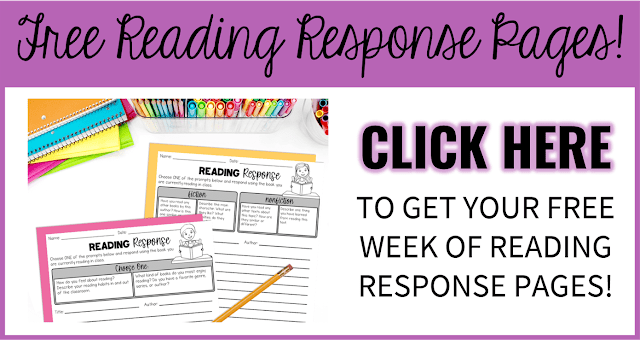
If you’ve enjoyed this post, please share it with friends and colleagues on Facebook or pin it on Pinterest:
